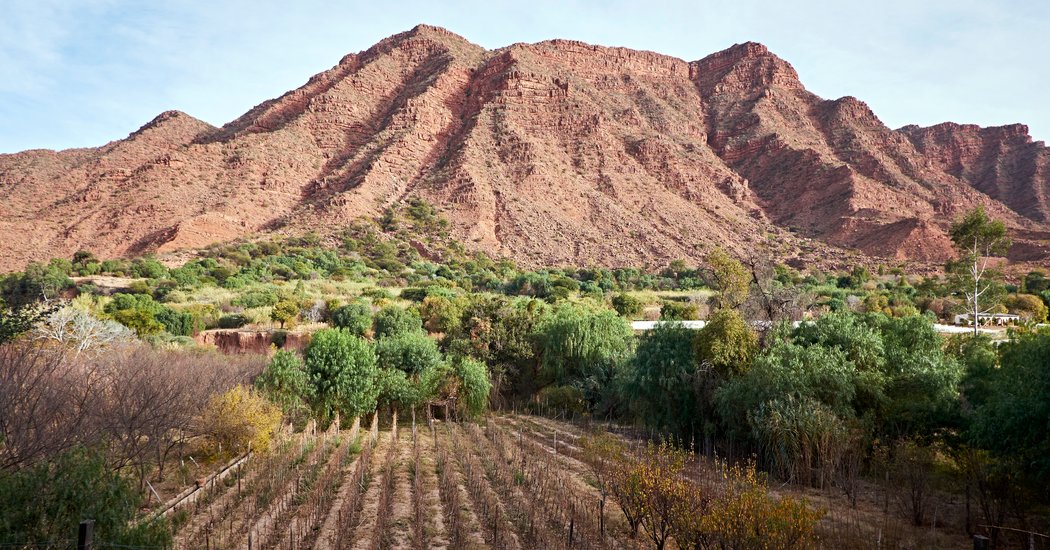
There are also pockets of grape varietals that were originally brought from the Canary Islands by the Spanish, like torrontés and pedro giménez in whites and negra criolla in reds. Vicchoqueña is a mutant of negra criolla that yields a wine akin to pinot noir.
The Valle de los Cintis, north of Tarija, is the spiritual home of small-scale traditional winemaking. There are still about 30 vineyards with parrales, or climbing vines, some 100 to 250 years old, that grow entangled with moelle and chañar trees. The Spanish used this system to protect the grapes from sun and diseases; it has disappeared everywhere else in the world, Mr. van Casteren said.
At Cepas de Fuego, Weymar Ríos Cavero, who is in his mid-70s, still makes wine much the way his father and grandfather did, hand-blending fertilizer and mixing a natural spray for diseases. “The only thing I’ve done is to put in trellises and search for grapes best adapted to here,” he said. His syrah is a standout, Mr. Tottenborg said.
Younger people are bringing new perspectives. It has taken 15 years for the fourth-generation winemaker Marcelo Vacaflores, 31, and his father to revitalize their abandoned family vineyard. They renovated the bodega, dug wells and plan to plant new grapes in August. Down the highway, the self-taught Christian Villamor started Tierra Roja by making wine in his bedroom. Although he died in 2016 at age 37, the family is carrying on the vineyard’s biodynamic methods and has planted new vicchoqueña vines.
Amane Hagiwara, 31, who grew up in Japan and North Africa and trained in France, discovered the valley while traveling and has made it his home for three years. Drawn by the terroir and tradition, he ferments old-vine moscatel de Alejandria and negra criolla in locally made clay amphoras for his label, Los Bauguales.
“What we have to do,” he said, is to be true to the local terroir “and not copy winemaking from elsewhere. Make it how you feel it, with your tradition, with your history; then you can transmit something real.”




